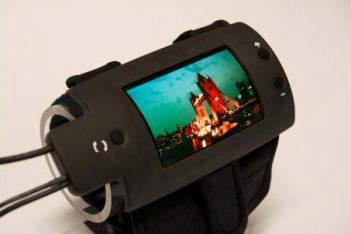 Universal Display Corporation today announced that it has been awarded a $935,000 contract extension by the U.S. Army Communication Electronics Research and Development Engineering Center (CERDEC). The extension builds on an existing Small Business Innovative Research (SBIR) Phase III grant with CERDEC for the development of flexible, active-matrix OLED (AMOLED) display technology for demonstration in a prototype wrist-based communications device.
Universal Display Corporation today announced that it has been awarded a $935,000 contract extension by the U.S. Army Communication Electronics Research and Development Engineering Center (CERDEC). The extension builds on an existing Small Business Innovative Research (SBIR) Phase III grant with CERDEC for the development of flexible, active-matrix OLED (AMOLED) display technology for demonstration in a prototype wrist-based communications device.
Development efforts under the contract extension will focus on combining Universal Display's PHOLED(TM) phosphorescent OLED technology with LG.Philips LCD (LPL) amorphous-Silicon (a-Si) TFT technology. Bringing LPL, a leading manufacturer of thin-film transistor liquid crystal displays (TFT-LCDs), to the program as a development partner marks an important step toward the commercialization of flexible OLED display products. In May, the two companies showcased the world's first high-resolution AMOLED display built on flexible metal foil at the 2007 Society for Information Display Conference and Symposium. Building on this initial demonstration, Universal Display and LPL plan to work on a prototype with key design and performance enhancements under this program.
L-3 Communications Display Systems (L-3 Display Systems), a leading supplier of ruggedized display systems for military uses and a long-standing partner under this program, is responsible for designing and integrating its advanced communications components with the QVGA, full-color, flexible AMOLED display into the prototype wrist-mounted communications device for delivery to CERDEC.
Universal Display was awarded Phase III of the SBIR grant by CERDEC in January 2006. The Company's work with the U.S. Department of Defense also includes flexible AMOLED display development for the U.S. Army Research Laboratories (ARL), the U.S. Navy and U.S. Air Force Research Laboratories.








